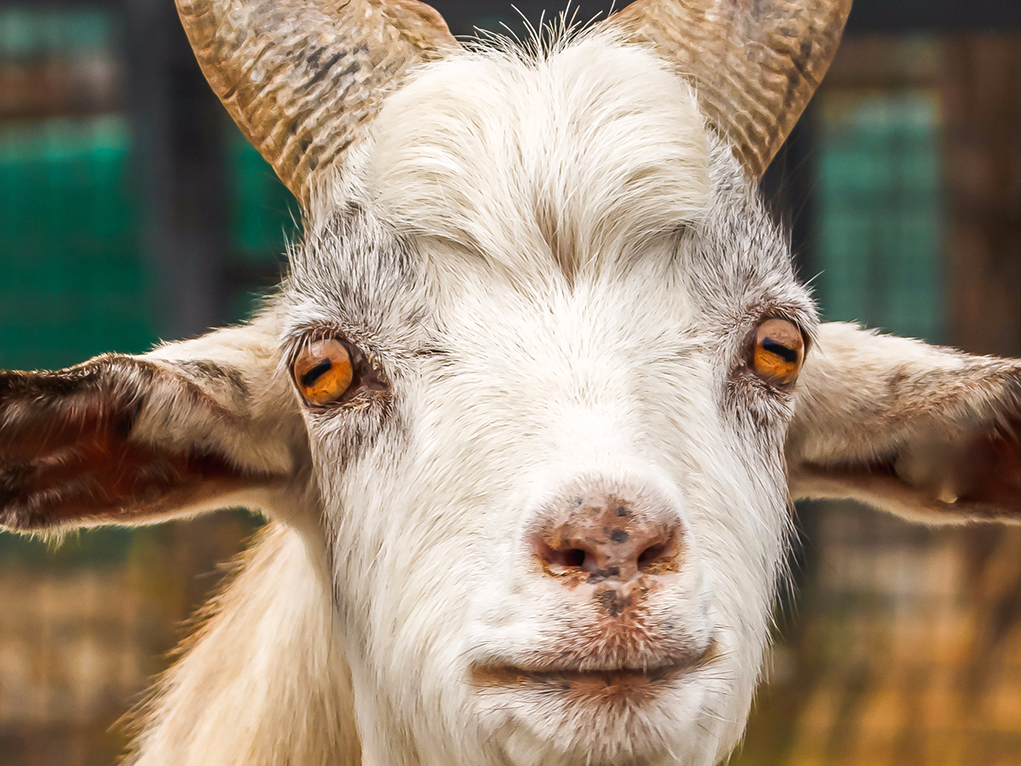Stone Soup #10: Caramel? Let's Goat For It - Goat's Milk Caramel
Stone Soup is an ongoing quarantine feature in which I come up with a recipe that uses the impossible thing in your cupboard, without making you go to the store or wasting any of your ingredients. Last time, we figured out how to braise elk.
Amanda says:
In my ongoing quest to support local farmers and stay out of grocery stores (especially right now), I ordered a box of produce and such from a goat farm. The package came with 2 quarts of goat milk which I have zero plan for. I have all the basic staples, flour, sugar, a healthy range of spices, rice, all the dry pasta, beans, etc. The one thing I don’t want to do is make it into cheese (the package came with goat cheese that I plan to stuff in my face) which is all the internet wants me to do.
This might be one of my most wholesome opinions: goats are neat. They can eat anything, and they can escape from pretty much whatever enclosure you put them in if they feel like it, and they’re just generally completely apocalyptic motherfuckers. And their pupils are rectangular, which I respect, ideologically.

Nice.
Also, one of my research sources says that goat milk is similar in structure to human milk, which is now a thing that you also have to think about!
There are a few big, important differences between goat milk and cow milk. They contain different proteins, which supposedly make goat milk easier to digest. There are more fatty acid chains in goat milk, which doesn’t mean much to me. The fat globules in goat milk are much smaller than the fat globules in cow milk, which makes it a little harder to separate out the cream, so we’re not going to make butter or ice cream.
Instead, we’re going to do something a hell of a lot more exciting. I’m reluctant to even call this a recipe for cajeta, which is a delicious Mexican caramel made from goat milk, because I’m sure I’m doing parts of it All Wrong. But it would be disingenuous of me not to acknowledge that cajeta is the bullseye of the dartboard I’m aiming at here, so I’ll make the same caveats here that I did when we talked about red bean paste: I’m not an expert in this genre of cuisine and cookery; this is not necessarily how you make the thing right, it’s just how you make the thing you can with what you have.
Now, get into the kitchen and let’s make a batch of
Goat Milk Caramel
This recipe scales, so don’t stress if you’ve already used up some of that goat milk for something else; if you scale it up, just add time to step four (and if you scale it down, be prepared to take time away from step four). Stretch your shoulders and warm up your arms, there’s a lot of stirring in your future.
Step One: Science! Set aside a few tablespoons of the milk. Stir about a half tablespoon of baking soda in there and set it aside. Here’s the deal: milk is naturally acidic. Things that are acidic hate to caramelize at low heats. Milk hates to be at a high heat, it gets all junked up real fast. But we want to turn this milk into caramel, so here’s the plan: we add a little baking soda to the milk, which will reduce the pH, allowing caramelization to occur at a lower temperature. So, here you’re dissolving the baking soda so it’ll be ready for you to add to the whole batch of milk later. You’re doing goat science! Look at you go!
Step Two: Time to sweeten the pot. Combine a quart of your goat milk with a cup of sugar and whisk whisk whisk until you can’t see the sugar anymore. This is a good moment to throw in a cinnamon stick, a couple of whole cardamom pods, a couple of whole cloves, some anise pods — big hearty spices that benefit from lots of cooking time — but don’t add any alcohol-based extracts yet, they’ll break down over the long cooking time ahead.
Step Three: Foam party. Over medium heat, bring your milk to a simmer. You should be stirring like crazy that whole time to keep the milk from scalding. Once it starts simmering, take it off the heat and add the dissolved baking soda. It should foam up like CRAZY — just keep stirring off the heat until it calms down. Then you can put it back on the heat
Step Four: Wait for a million years. Sorry, this part sucks. You’re going to bring this back up to a gentle, tender, friendly lil simmer. Let it go, stirring frequently and thoroughly and carefully, for the rest of your life. It’ll take at least 45 minutes to cook down properly. You get to control how thick or thin your caramel comes out, but keep in mind this whole time that it’ll thicken further as it cools off the heat. Once it’s off the heat, you can add extracts and flavoring and booze. Vanilla, maple, pumpkin spice, rum, bitters, run wild.
Strain out any chunky spices you used to flavor the simmering milk. Store this in a tightly-sealed jar in the fridge, it’ll keep for like a month.
That’s it! You have goat milk caramel now! You did it! Dip stuff in it, pour it over stuff, eat it with a spoon, live your life. You’re the master of this reality. Well done.
Just the recipe:
Goat Milk Caramel
Dissolve .5 tbsp baking soda in a few tbsp goat milk and set aside
- Combine 1 quart of goat milk with 1C sugar and stir to dissolve. Add spices at this point (a cinnamon stick, a star anise pod, cardamom pods, whole cloves will all work).
- Stir constantly over medium heat until milk is simmering.
- Remove from heat and add the dissolved baking soda. Milk will foam up; stir constantly off the heat until foam dies down.
- Return to heat and gently simmer, stirring constantly, until you reach the desired consistency. Remove from heat and add any of your desired flavor extracts (vanilla, rum, bitters, etc.).
Strain into a tight-sealing jar and keep in the refrigerator for up to a month, if it lasts that long.






Member discussion